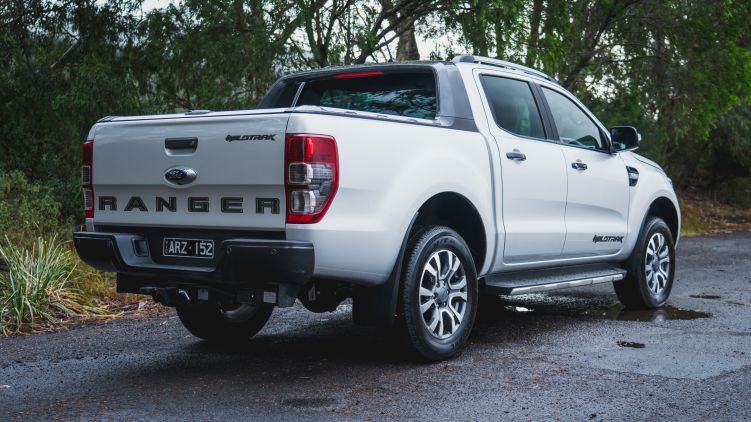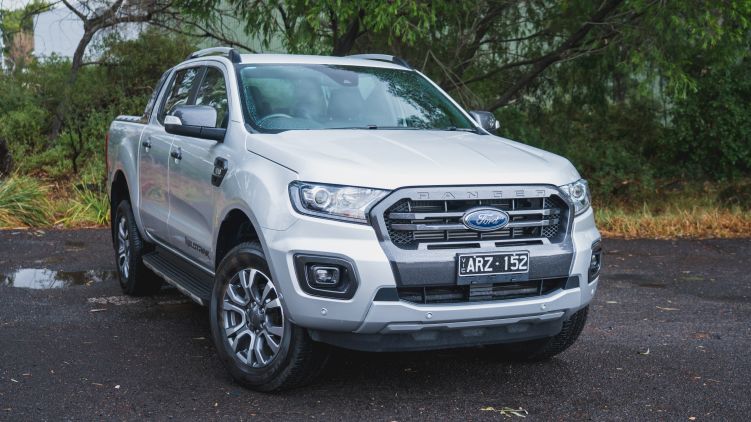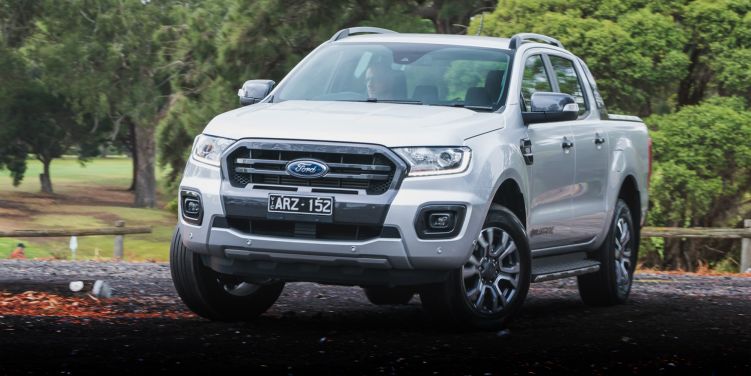Get off the beaten track with the ‘powerful’ 2019 Ford Ranger Wildtrak
Now that the Ford Ranger Wildtrak has a more heroic sibling in the shape of the Ranger Raptor, some of the limelight has been taken off the former halo model. It’s still every bit as important to Ford and to Ranger buyers, for a number of reasons.
Unlike the Raptor, which has been comprehensively reworked to make it capable of off-road ‘Baja-style’ racing, the Wildtrak determines its differences from other Ranger variants through trim finishes and a slightly more attention-grabbing appearance package.
It also distances itself from the Raptor with this engine, a carryover 3.2-litre five-cylinder producing 147kW at 3,000rpm and 470Nm from 1750–2,500rpm and a choice of six-speed manual or six-speed automatic transmissions.
As seen here, equipped with a 6AT and inline-five engine, pricing tips a not-insignificant $63,290 before on-road costs. Step down to a manual for $2,200 less, or up to the 10kW/20Nm more powerful 2.0-litre bi-turbo four-cylinder and 10-speed auto from the Raptor for $1,500 extra.

Four-wheel drive is standard for the Wildtrak, while other Ranger grades offer a Hi-Rider 4×2 driveline as an alternative.
Though it may carry over, the 3.2-litre engine is hardly past its use-by date. Although power and torque haven’t been bumped up as part of the late-2018 update, the Ranger still claims more power and torque than its four-cylinder Toyota HiLux and Mitsubishi Triton rivals, the two closest sellers in the ute segment.
Ford’s strategy is a clever one. Despite glowing reports so far of the 2.0-litre engine’s drivability, keeping the older, larger-capacity engine available means buyers who don’t trust downsizing can still opt for a Ranger and boast the largest engine capacity in the ute segment – short of a V8-powered, locally converted, American import.
More than just its engine, though, the Ranger Wildtrak does an impressive job of straddling the line between rough-and-ready work trucks and comfortable family transport. That’s certainly true of the interior, which is decked out in a way that would have been the stuff of fantasy for the ute segment a few years earlier.
Read more: Ranger news, reviews, comparisons and videos
The list of highlights includes dual-zone climate control, keyless entry and start, auto lights and wipers, leather steering wheel and partial leather trim with orange contrast elements, black headlining, heated power-folding mirrors, heated front seats and power-adjustable driver’s seat. Flight of fancy equipment for the ute market not that long ago.
Ford is one of the ute segment frontrunners when it comes to safety equipment, too, including autonomous emergency braking with pedestrian detection, tyre pressure monitoring, traffic sign recognition, driver fatigue monitoring, adaptive cruise control with speed limiter, rear camera, front and rear park sensors, lane-keeping assist, and semi-autonomous self-parking. There are also six airbags (including full-length curtain airbags), hill descent control, rollover mitigation and electronic stability control.

Infotainment also lauds its advantages over competitors, with an 8.0-inch touchscreen boasting inbuilt satellite navigation and digital radio, CD player, plus Apple CarPlay and Android Auto connectivity is not only feature-packed, but also hosts one of the clearest and easiest to use interfaces to interact with. Even the six-speaker sound system is punchy, though it’s far from a premium sound system.
As car-like as the cabin may appear on the surface, at its heart it is still a commercial vehicle, so aside from the contrasting stitching atop the dash, other interior surfaces are fashioned from hard-wearing (and hard to the touch) plastics designed to survive dirt, dust, knocks and scuffs. The steering lacks reach adjustment, the rear seats aren’t as spacious as you might expect in such a long vehicle, and there are still no rear console air vents.
For use on-road, the five-cylinder engine is a good-un. Given the Wildtrak’s near 2.3-tonne heft, it’s not too swift to move from a standstill, but at the same time you’ll hardly be a nuisance to other road users either.
Driven sedately, the driveline will usually upshift just ahead of peak torque at 1,750rpm, yet feels none the worse for it. But slip the gear selector over to ‘sport’ or take control of gears manually, and it becomes much easier to access full grunt for towing or while heavily laden.
For the best results, the Wildtrak feels most balanced with some weight loaded into the tub, but a local engineering and development program has delivered one of the most settled and comfortable utes in the segment. There’s no nervous skipping and a fairly planted rear when unladen. The steering isn’t needlepoint sharp, but is still quick enough to make the Ranger feel almost nimble.
Take it off the beaten path and rough-trail comfort is very decent. Without going too hardcore, the Ranger can easily pick its way along fire trails, maintain its grip over rocks and gravel quite well and it’s as simple as twisting a dial in the centre console to get in and out of four-wheel drive.

Real adventurers are sure to seek additional ground clearance and a more aggressive tyre package, but if your favoured campsite or riverside destination is set back from the main road without being too far into the wilderness, the factory set-up – including 237mm of ground clearance and a class-leading 800mm wading depth – should well and truly do the job.
As with plenty of other utes in the segment, maximum towing capacity is 3500kg (and the Wildtrak includes a towbar as standard equipment), GCM is 6,000kg, kerb weight is 2,278kg, and maximum payload is 922kg. So, a fully laden ute (that’s people and cargo) leaves you with 2,800kg of towing capacity, but a maxed-out trailer gives a slim 222kg of payload in reserve – keeping in mind any accessories added to the vehicle would also need to be taken in to account.
In terms of clear advantages (or disadvantages) of the 3.2-litre engine alongside the newer 2.0-litre option, in general running about you’d be hard-pressed to pin down any yawning gap between the two.
Read more: Everything Ford
For an idea of how the two engines stack up under pressure, we’ve compared them in a tow test, albeit in Everest rather than Ranger form, but there are certainly plenty of parallels.
The smaller engine spins up a little quicker, feels a touch more responsive and makes less noise. The six-speed automatic tied to the larger engine tends to be more decisive about which gear to use, with ratios that need to stretch further. Neither one is a bad option, though.
Even the difference in fuel consumption isn’t as wide as you might expect. Officially, the 3.2-litre engine uses 8.9 litres per 100km, while on test (and more often than not unladen) a decent 9.8L/100km is a good sign, but of course your usage will have a bigger impact. However, compared to time spent in the 2.0-litre models, the older engine appears to be no worse than a single litre per 100km off the pace.

After-sales service includes capped-price maintenance at 12-month or 15,000km intervals (whichever comes first), which tallies up $2,585 worth of scheduled visits in the first five years. Ford’s standard warranty also covers five years with no upper kilometre limit.
At the end of the day, there’s no wrong choice. Both available Ranger engines are up to the task for a ute like this. Both can flex their muscle when required, and at the same time both manage to keep refinement at pleasingly premium levels.
Your faith in technology will likely drive your buying choice, but for those that question the longevity of the 2.0-litre engine and 10-speed automatic, Ford has your back. Cleverly, no-one need be turned away by what the Ranger has to offer, with the ‘old faithful’ 3.2-litre doing a good job of keeping traditionalists happy, while also doing a good job in general.








 Proudly Australian owned and operated
Proudly Australian owned and operated